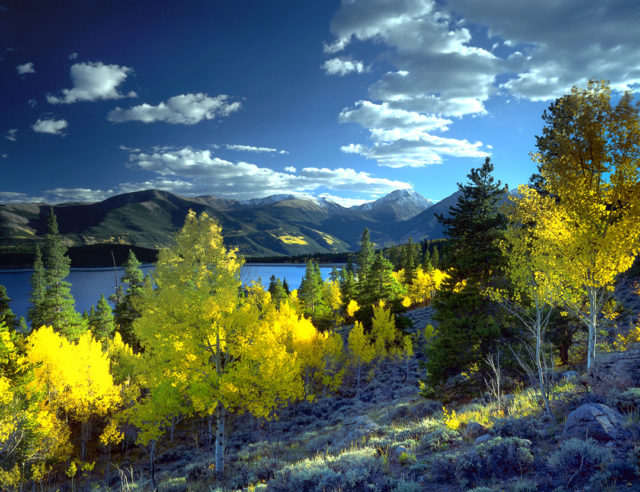We applaud Northglenn and the many other municipalities in the West who have devoted time and energy to plan for drought.
In 1962, Life Magazine named Northglenn, Colorado “the most perfectly planned community.” In keeping with this tradition of planning, the City’s actions are building a sustainable future despite the water challenges presented by drought. In the last two decades, less snow and rainfall mean less water is flowing in the region’s rivers, and there’s less water available to everyone promised. Taking this reality to heart, the community participated in our Growing Water Smart workshop in 2020. “The workshop helped us increase collaboration across departments. These relationships enabled us to set bigger goals and make efficient progress,” says Sophie Porcelli, Water Resources Administrator. Then Northglenn went on to quickly develop and adopt a Drought Mitigation and Response Plan in April 2021.


Participants in our Growing Water Smart workshops learn to integrate land use and water planning effectively. The workshops unite various local leaders—including elected officials, city planners, and water resource managers—to secure their water future in the face of both long-term drought and continued development. The Northglenn team developed goals for water-smart growth with their values in mind. Along with a suite of best practices, success stories, and planning and policy tools, our workshops discuss the benefits of drought planning.

A drought plan is an increasingly common necessity for cities and towns in the Colorado River Basin that draw on the river’s water to sustain their residents, businesses, and farms. Many of these cities are among the fastest-growing places in the United States. Local leaders must address the real concerns that people living in the region have—they want to know that water will be available for their kids and grandchildren. Planning for drought head-on is essential.
The Colorado Water Conservation Board offers many resources around drought, including Drought Management Planning: A Guide for Water Providers, updated last year to reflect what decades of drought have taught leaders. While conditions for the Colorado River have been deteriorating over this time, there is still time to act. Drought doesn’t hit quickly like hurricanes and tornadoes, but swift planning today will minimize the harmful effects of water scarcity on local economies, human health, and the environment. The guide explains the power of a drought plan: “effective drought management plans remove the ‘crisis’ from drought response efforts, reduce the hardship caused by water shortages, and raise public confidence in the actions taken to address the water supply shortage.”

A drought plan assesses how reductions in rainfall and snowpack, or smaller water deliveries, might impact people and the environment. It can also evaluate how residents, businesses, and farms are already feeling the effects. The plan identifies which departments will monitor drought and how to determine the stage based on severity. A drought plan assigns response actions, such as repairing leaks, increasing the use of recycled water, turning off ornamental fountains, designating specific days to water landscaping or parks, or establishing water shortage pricing. It also determines how to communicate changes to residents.

A thorough plan and well-defined policies help water-smart communities thrive. “A known, shared plan to reduce water usage during dry times means businesses and residents understand how they will be asked to participate in drought management—and adapt to do so. This can effectively protect against human health crises and mitigate economic impacts to local businesses,” emphasizes Megan Holcomb, Climate Change Risk Management Specialist at Colorado Water Conservation Board.
Immediately after Northglenn adopted their Drought Mitigation and Response Plan, the mayor and council declared a Stage One drought level, bringing the plan to action. We applaud Northglenn and the many other municipalities in the West who have devoted time and energy to plan for drought. Together we are Growing Water Smart!
Together we are Growing Water Smart!
Growing Water Smart workshops are also offered in Arizona and California. Growing Water Smart is a joint program of Sonoran Institute and the Babbitt Center for Land and Water Policy, a center of the Lincoln Institute of Land Policy.
Blog post by Corinne Matesich, marketing communications manager.
